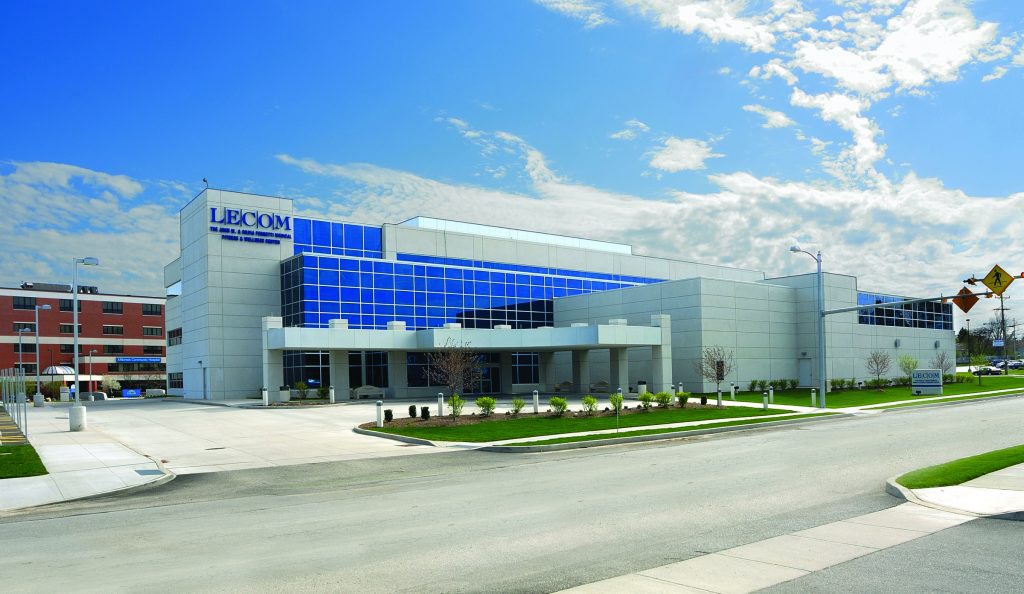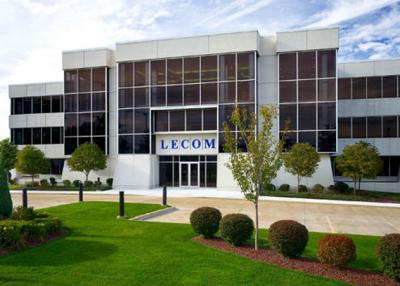LECOM: Unifying Healthcare and Communities
How many parts came together to form the nation's largest medical college
Osteopathic medicine is based on the premise that the whole is greater than the sum of its parts. The body is not a mishmash of cells, tissues, organs, and systems, but an integrated and purposeful unit with the innate ability to regulate, heal, and maintain itself. A patient's mind and spirit are not afterthoughts during treatment, but equally important considerations.
So it is, too, with the health of a community and the health of its population. The Lake Erie College of Osteopathic Medicine (LECOM) was established in 1992 by Millcreek Community Hospital physicians and administrators, who saw the need to bring more healthcare practitioners aboard. Its inaugural class began work on Aug. 9, 1993 and graduated on May 24, 1997, after which LECOM received full accreditation from the American Osteopathic Association.
Now, 30 years later, LECOM is the nation's largest (and second most affordable) medical college, with four campuses (Erie | Bradenton, Fla. | Greensburg, Pa. | Elmira, N.Y.) and a fifth planned (LECOM at Jacksonville University in Florida). It is also the country's only osteopathic academic health center — defined as the integration of a health profession school, patient care operation, and research enterprise.
The medical college, Millcreek Community Hospital, and Medical Associates of Erie (a clinical practice network of physician's offices throughout Erie County) form LECOM's core here in the Gem City, a self-sustaining organism supplying the community with fresh and vital healthcare resources — just as founding partner, president, and CEO Dr. John Ferretti intended. That core has been regularly reinforced throughout the decades, with the additions of the John M. and Silvia Ferretti Medical and Wellness Center (2009), LECOM Institute for Successful Aging (2015), LECOM Institute for Behavioral Health (2020), and the soon-to-open LECOM Ambulatory Surgery Center, a 23,000 square-foot outpatient surgical facility.
 LECOM has expanded their footprint locally to include the John M. and Silvia Ferretti Medical and Wellness Center (pictured), along with an astounding number of other medical and educational health care facilities since their inaugural class began in 1993. (Credit: LECOM Erie)
LECOM has expanded their footprint locally to include the John M. and Silvia Ferretti Medical and Wellness Center (pictured), along with an astounding number of other medical and educational health care facilities since their inaugural class began in 1993. (Credit: LECOM Erie)
Acquisitions of Corry Memorial Hospital, the LECOM Nursing and Rehabilitation Center, and the Visiting Nurse Association of Erie County in 2016 and a partnership forged with Warren General Hospital in 2017 have extended LECOM's reach throughout Northwest Pennsylvania, delivering care to rural communities through facilities such as the Corry Medical Arts Center (2019) and the Union City Rural Health Clinic (2020). LECOM continues to invest in the regional population both young (the Achievement Center of LECOM Health, which treats adolescents who are experiencing emotional, social, physical, or behavioral challenges) and old (with Independence Court most recently joining its Parkside Senior Living Communities in Erie, North East, Millcreek, and Corry).
When we factor in LECOM's vast alumni network, we see its life-changing and life-saving work spanning the globe, its collective impact nearly incalculable. To date, LECOM has awarded its Doctor of Osteopathic Medicine Degree to more than 8,500 graduates. To put it in perspective, of the estimated 142,000 DOs practicing in the United States today, roughly 1 in every 20 is likely to be a LECOM grad. That percentage should only be expected to grow, as LECOM has introduced more than 500 doctors of osteopathic medicine in each of its recent graduating classes. That means of the approximately 6,500 DOs entering the U.S. workforce every year, between 7 and 8 percent will have earned their doctorate through LECOM.
Osteopathic medical students are empowered to tailor the curriculum to how he or she best learns, with five pathways to attaining their doctorate. Perhaps the most innovative of these is the Problem-Based Learning Pathway, in which medical case studies provide the foundation in the biochemical and clinical sciences. The lecture hall is replaced with intensive small group study sessions, in which knowledge is built through applied context and collaboration. A faculty facilitator guides (but does not dictate) the direction of the group's efforts. It's a sort of inside-out approach that offers real context from the onset, and for many an attractive alternative to traditional learning models. (The beautiful backdrop of the LECOM Education Center — formerly the Porreco Center of Edinboro University — doesn't hurt either, with a spacious outdoor wellness and recreation area and a state-of-the-art Clinical Simulation Lab.)
Not all LECOM students learn the same way; nor do they learn the same things.The total alumni across all of LECOM's programs number nearly 20,000 — these health professionals are equipped with diverse and broad-ranging skill sets benefiting communities around the nation and the world. The LECOM School of Pharmacy joined the operation in 2001 and has since granted Doctor of Pharmacy (PharmD) degrees to more than 4,000 graduates. It bears the distinction of being one of the first in the country to offer online distance learning and accelerated degree options. Accelerated learning pathways continue to be a differentiator across LECOM programming.
In 2012, LECOM welcomed its first class of dental students to its Bradenton, Fla. branch campus (which began accepting School of Osteopathic Medicine applicants in 2004 and School of Pharmacy students in 2007). The School of Dental Medicine adopts the same Problem-Based Learning model that has proven so successful with osteopathic medicine students, emphasizing teamwork, self-reliance, and the role of faculty as vested mentors vs. impersonal lecturers. Dental students spend their last year in dental outreach practices in either Defuniak Springs, Fla. or here in Erie.
In 2018, LECOM announced the formation of the LECOM School of Health Services Administration (SHSA), which teaches the business of healthcare and prepares students for deft leadership in the private or public spheres. That same year, the LECOM Graduate School of Biomedical Sciences was also established to provide educational and research opportunities for students in a variety of different career paths. The LECOM School of Podiatric Medicine will look to establish a strong foothold in the community when it opens this fall as the 11th podiatric medical school in the United States.
With a high-functioning structure integrating programs, campuses, facilities, faculty, administrators, students, alumni, and partners, the LECOM juggernaut more than stands on its own two feet, one firmly planted in the present and the other in a promising future.


.png)
